
SCROLL
DOWN
Food Industry, NGOs, Consumers Urge FDA to Unify Food Program
Image credit: Dr_Microbe/iStock / Getty Images Plus via Getty Images

In late April, 29 consumer and public health groups, industry groups, and state government representatives co-signed a letter addressing the U.S. Food and Drug Administration (FDA) about the issues they perceive within FDA's structure, governance, and performance. The groups also held a joint press conference clarifying their stance. The letter expresses the groups' appreciation for FDA's work in implementing the Food Safety Modernization Act (FSMA), and also addresses FDA's lack of a single, full-time leader with the expertise and power necessary to effectively direct FDA's food programs. The groups call for a unification of FDA's food program under a dedicated deputy commissioner for foods, who will have accountability to FDA's commissioner and authority over several food program regulatory groups: the Center for Food Safety and Applied Nutrition (CFSAN), the Center for Veterinary Medicine (CVM), and the Office of Regulatory Affairs (ORA).
The letter states the groups' belief that the lack of such a leader is negatively affecting the implementation of FSMA and the New Era of Smarter Food Safety. Additionally, the letter requests that FDA focus its efforts on improving transparency and engagement with stakeholders, as well as provide transparent accounting of FDA expenditures so that stakeholders can effectively work with FDA to acquire more funding for its food program. Notable groups that signed the letter include: the Association of Food and Drug officials, STOP Foodborne Illness, Consumer Reports, the Environmental Working Group, the Center for Food Safety, the International Fresh Produce Association, and others.
The EU recently closed a call for evidence on the topic of applying EU health and environmental standards to imports of agricultural and food products. The final report will assess the reasoning and legality of subjecting all imported agricultural and agrifood products to EU health and environmental standards, such as animal welfare standards and production methods. The report, planned for Q2 2022, will also explore how the EU can more consistently apply health and environmental standards while conforming to World Trade Organization (WTO) guidelines.
The EU is considering applying its health and environmental standards to all imports in an effort to increase the environmental sustainability of its food systems, in line with the EU Green Deal's Farm to Fork Strategy. However, the possibility of the EU applying its environmental and health standards to all agrifood and agricultural imports could restrict the supply chain and inflate costs. Global interest groups, such as the U.S. Meat Export Federation, have submitted their concerns about the potential consequences of such action.

EU Considers Applying Health, Environmental Standards to All Food Imports
FDA Releases New Food Fraud Webpage
The U.S. Food and Drug Administration (FDA) has released a new website on economically motivated adulteration (EMA), including food fraud. The purpose of the website is to keep businesses and consumers informed on the latest food fraud developments.
The website includes links on how to report food fraud; examples of food adulteration; how food fraud is detected and monitored; enforcement and legal consequences, such as recalls, seizures, and import refusals; guidance documents to assist manufacturers and importers; and a list of import alerts.
EMA occurs when "someone intentionally leaves out, takes out, or substitutes a valuable ingredient or part of a food," according to FDA. EMA also occurs when a substance is added to a food to make it appear better or of greater value.
Food fraud is a common type of EMA that FDA investigates, but EMA also occurs with other products, including animal food and cosmetics. Some types of EMA are also misbranding violations. Estimating how frequently food fraud occurs or its exact economic impact can be challenging because food fraud is designed to avoid detection. Outside estimates by experts have found that food fraud affects 1 percent of the global food industry at a cost of approximately $10–$15 billion per year, although more recent expert estimates peg the cost as high as $40 billion per year.
Food fraud can also lead to major health issues and even death. Some examples include lead poisoning from adulterated spices and allergic reactions to a hidden or substituted ingredient that contains a small amount of just one food allergen.
Click here to visit FDA’s new EMA website.
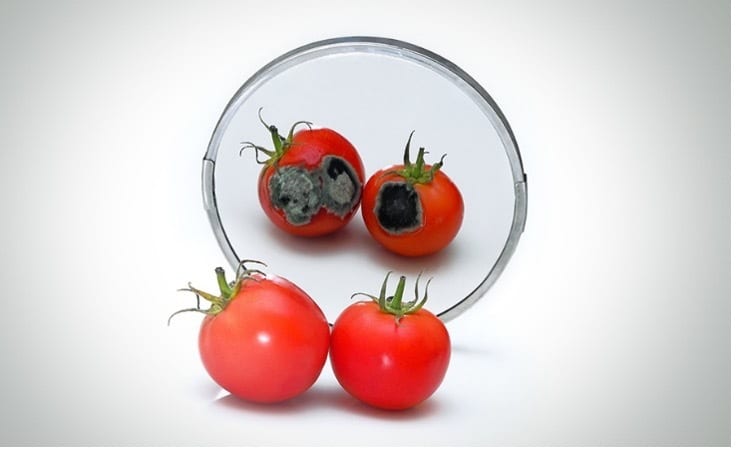
Image credit: Dr_Microbe/iStock / Getty Images Plus via Getty Images
Shiga toxin-producing Escherichia coli (STEC) outbreaks are often linked to processed lettuce, which undergoes substantial physiological changes during storage. Scientists from the U.S. Food and Drug Administration's Center for Food Safety and Applied Nutrition (FDA's CFSAN) and the U.S. Department of Agriculture's Agricultural Research Service (USDA's ARS) used whole genome sequencing to investigate the bacterial microbiome and STEC O157:H7 colonization of fresh-cut lettuce. Two cultivars, with either long or short shelf life, were observed, and were subject to different variables: whether the lettuce was harvested in the spring or fall, and whether the lettuce was stored in cold or warm temperatures.
The results of this study suggest that seasonality, shelf life, and storage atmosphere are all main factors in the prevalence of STEC in lettuce. The microbiomes of bagged romaine lettuce samples were also affected by the lettuce's season of harvesting, lettuce deterioration state, and survivability of STEC on the lettuce. Notable findings include:
- In the cultivar with short shelf life, STEC O157:H7 survived better in a cold atmosphere
- STEC O157:H7 in both cultivars multiplied rapidly at high storage temperatures
- Fall harvesting and lettuce deterioration were both factors associated with high STEC O157:H7 survivability
- Elevated carbon dioxide levels in packaging were correlated with STEC O157:H7 multiplication at high storage temperatures
- STEC O157:H7 population changes occurred at low storage temperatures
- Fall and spring microbiomes differed before and during storage at both temperatures, with fall microbiomes supporting the greatest STEC O157:H7 survivability in both cultivars.
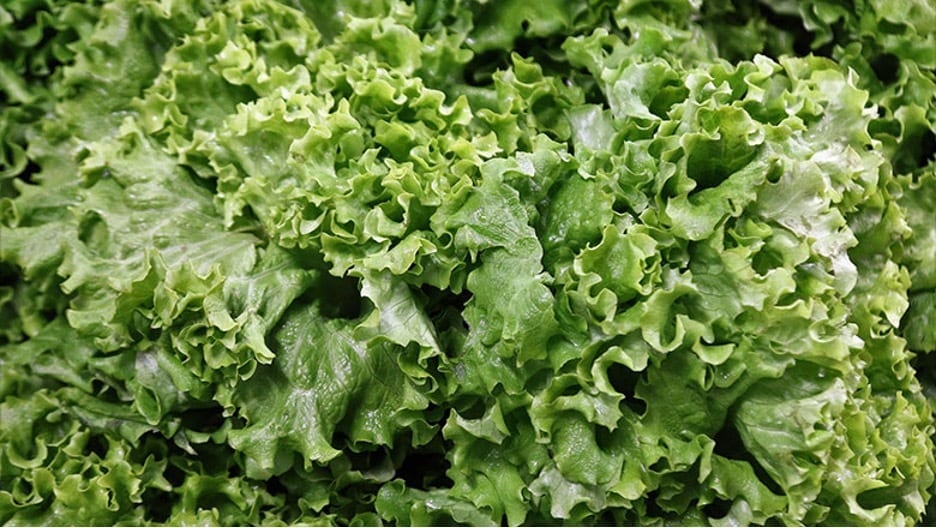
E. coli in Lettuce Affected by Season of Harvest, Shelf Life, Storage Temperatures
AFDO Whitepaper Asks FDA to Modernize Recalls
The Association of Food and Drug Officials (AFDO) has released a whitepaper entitled "Recall Modernization: Accelerated Partnering for Effective Recalls." The whitepaper calls on the U.S. Food and Drug Administration (FDA) to explore new approaches to policy and foundational practices for recalls, and provides recommendations for recall modernization based on three years of collected data and information. To craft these recommendations, AFDO explores two fundamental issues associated with food recalls: consumers continuing to eat recalled foods and becoming ill, and recalls being issued too late to prevent additional illnesses.
AFDO identified what it believes to be the single most important issue that needs to be addressed in recall modernization: creating a clear and common purpose in effectuating recalls for FDA and state, local, tribal, and territorial partners. AFDO presents that clear purpose as prioritizing public health by quickly removing products from the market, and providing consumers with simple information that will allow them to identify recalled products. AFDO believes that it is important to shift the public health system's focus from administrative measurement of recall effectiveness to timely and successful product removal.

Image credit: Dr_Microbe/iStock / Getty Images Plus via Getty Images
The Codex Alimentarius Committee (CAC) drafted a new guidance for the management of microbiological foodborne illness outbreaks at the 52nd Session of the Committee on Food Hygiene. The guidance aims to establish local, national, and multiagency networks of preparedness to limit the scale of such outbreaks by standardizing communication, interpretations, and methodology. To effectively handle and mitigate foodborne illness outbreaks, the guidance describes ways in which authorities can create and maintain preparedness systems, including:
- International alert networks for better exchange of information
- Official networks between public health bodies, veterinary authorities, food control agencies, and laboratories at local and national levels
- Surveillance and monitoring systems
- Analytical methods
- Risk assessment, communication, and strategy.
The guidance recommends molecular typing methods, along with epidemiological data, as a superior form of analysis in detecting clusters of human cases and linking a case cluster to the food source. CAC advisors express that increased use of genetic methods can improve outbreak detection and source identification, by allowing experts to compare pathogen strains and narrow their investigations. The guidance also emphasizes the importance of consistent decision-making, at local and national levels, when categorizing an outbreak as an incident, emergency, or crisis. The following are suggested factors for authorities to keep in mind when categorizing an outbreak and developing response plans:
- The number of patients and severity of illness
- The geographic spread of illness and whether or not it is ongoing
- Whether the hazard is known or unknown
- The source of contamination and history of the establishment
- Likely exposure and consumption patterns
- What actions must be taken to protect public health
- The nation's capacity to quickly react to and contain the outbreak
- The distribution and availability of the food, including trade implications
- Whether or not the outbreak was intentional
- Consumer perception when correlating an outbreak with a product or food category.
The guidance is limited to microbiological hazards, as pathogens are the main cause of foodborne illness outbreaks. It is intended to facilitate a common understanding and a consistent approach to foodborne illness outbreaks, and to help officials manage situations with speed and order, especially in countries that are still developing their national food safety control systems. The guidance has been sent for adoption at the 53rd Committee on Food Hygiene, set to take place in November 2022.

New Codex Guidance for Managing Foodborne Illness Outbreaks
Industry Remembers Dr. Payton Pruett
Food Safety Magazine and industry colleagues mark the passing of Dr. Payton Pruett, a prominent figure in the food processing and food safety industries, in March 2022. Dr. Pruett most recently served as the president of Practical Food Safety Solutions LLC, as well as a member of the Food Safety Advisory Board for Ecolab. He also served as the Vice President of Corporate Food Technology and Regulatory Compliance for The Kroger Co. (2005–2016), as Senior Director of Food Safety and Laboratory Services at ConAgra Foods, and as a member of the laboratory and technical service operations at Silliker Laboratories. He was a prolific writer and presented extensively on the microbiological safety and quality of foods. Dr. Pruett was also a member of the International Association for Food Protection (IAFP), the Institute of Food Technologists, and the American Society of Microbiology. He also served as editor for the Journal of Food Protection from 2004–2009 and was an active member of the GFSI Foundation Board of Directors for several years. During Dr. Pruett's tenure at Kroger, the company was awarded IAFP's Black Pearl Award and SQFI's Manufacturer of the Year honor.

Image credit: Dr_Microbe/iStock / Getty Images Plus via Getty Images

Global food safety expert Dr. Lone Jespersen has been appointed as a visiting professor at the University of Central Lancashire (UCLan). She will develop her existing research projects with the University, as well as work with both postgraduate and undergraduate students to share her expert knowledge.

The International Association for Food Protection (IAFP) has elected Dr. Manpreet Singh to the Executive Board as Secretary. Dr. Singh will fulfill a five-year commitment to the Association, serving as President beginning in July 2025.
Pace International, a provider of postharvest solutions for the fresh produce industry, welcomes Dr. Veria Alvarado to the Pace International Global Research organization as a Postharvest Physiology Manager.
QualiTru Sampling Systems has promoted Anne Bigalke to Vice President of Strategic Development, and Barbara Grayes has joined the company as the new Vice President of Sales.

Mickie French, an accomplished global expert in food value chain communications and marketing strategy, is the new Executive Director of The Center for Food Integrity (CFI).
Jenica Eisenbach has been appointed PPG Global Technical Service Manager, Packaging Coatings.
PSSI has appointed operational leader Dawn Winsauer as Senior Vice President of the south region, and promoted Levi Christenberry to Vice President of Operations for the southcentral division.

JESPERSEN
FRENCH
EISENBACH
FoodChain ID Acquires Promag
FoodChain ID, a provider of technology-enabled food safety, quality, and sustainability solutions, has acquired Promag, a food and feed safety certification provider. Promag has served the animal nutrition and farming sector in France and Belgium for over 35 years, and it will now complement FoodChain ID’s operations in those regions. The business move will allow Foodchain ID, which is based in the U.S., to better serve the Benelux region in Europe.
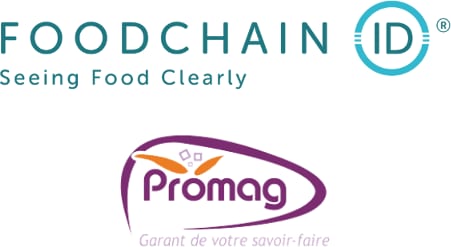
AOAC-Certified Pathogen Enrichment Kits Provide Results in Six Hours
The first AOAC-certified product to enable pathogen results within an eight-hour shift has been approved. Pathotrak, a food safety technology startup, has announced the AOAC certification of its Rapid Pathogen Detection Enrichment Technology, which enables food safety tests within six hours. The AOAC certification for Pathotrak’s next-generation sample prep process applies to the detection of Salmonella and pathogenic Escherichia coli in romaine lettuce, and will soon extend the matrices to four additional leafy greens. Pathotrak’s pathogen enrichment kits use a patented method of separating and concentrating pathogens from food samples by addressing the enrichment step of food testing, when samples are incubated for 22–48 hours until enough bacteria are grown to be tested effectively. Pathotrak’s technology incorporates a microfiltration process to create an environment where bacteria reproduce more quickly than they would traditionally.
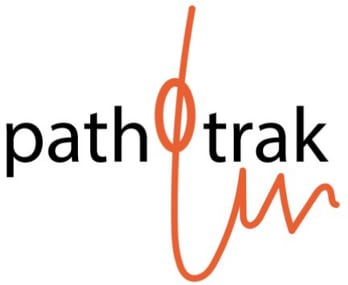
ASI LLC, a provider of independent third-party certification, inspection, consulting, and training services, has entered into a strategic, international partnership with food safety quality management system software company FoodReady.AI. The software solution automates and simplifies Hazard Analysis and Critical Control Points (HACCP), food safety plans, safe quality food (SQF), food safety requirements, daily logs, checklists, standard operating procedures (SOP), corrective actions, and the ability to produce reports. Capabilities of FoodReady include traceability management, food safety/HACCP plan creation, SOP creation and management, SQF/British Retail Consortium compliance, time/temperature logs, Bluetooth integration with smart devices, smart checklists, supplier documentation management, receiving, ingredient management, and batch management.
ASI Announces Strategic Partnership with FoodReady
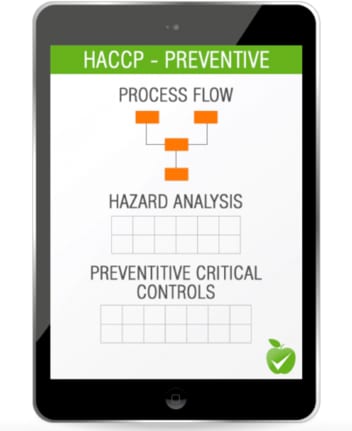
Hy-Vee Deploys ComplianceMate across Portfolio of Brands
Hy-Vee, a grocer that operates more than 240 retail stores in eight U.S. states, has partnered with CM Systems LLC to deploy the ComplianceMate food safety system across its entire portfolio of brands, including its Italian, Asian, Hickory House, Market Grill, Meat, Seafood, Deli, and Bakery areas. The ComplianceMate system uses a customizable food safety management software that automatically tracks key indicators of food safety risk. As the system generates data, it can alert any level of management—from store level to corporate offices—of potentially unsafe food before the food is served to the public. ComplianceMate also facilitates above-unit auditing for Hy-Vee and its third-party auditing group. Auditors now utilize the ComplianceMate system to gather and preview food safety data prior to entering stores.

Save Foods Completes Pre-Harvest Application Trials on Citrus Fruits
Save Foods, an Israeli-based agrifood tech company focused on developing and selling eco-friendly products specifically designed to extend the shelf life and ensure the safety of fresh fruits and vegetables, has completed a series of successful trials in conjunction with a leading California academic institution. The study’s results demonstrate that the pre-harvest applications of Save Foods’ treatments are effective in mitigating the presence of decay-causing pathogens on the surface of citrus fruits. According to the company, Save Foods’ post-harvest treatments are effective at maximizing the shelf life and safety of fresh produce, and the recent California studies indicate that growers and packers can benefit further from a pre-harvest application.
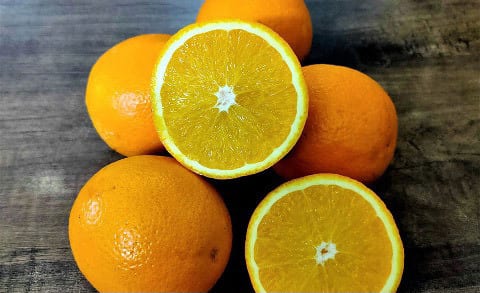
Freshcare FSQ Standard 4.2 Achieves GFSI Recognition
The Global Food Safety Initiative (GFSI), the Consumer Goods Forum’s Coalition of Action on food safety, and Freshcare Ltd. announced that the Freshcare Food Safety & Quality Standard Edition 4.2 has successfully achieved recognition against GFSI’s Benchmarking Requirements Version 2020.1. The recognition encompasses GFSI scopes BI—farming of plants, and BIII—pre-process handling of plant products. The achievement of global recognition ensures that Freshcare remains at the forefront of Australian and international food safety compliance.


ONLINE & OF NOTE
The U.S. Food and Drug Administration (FDA) conducted a webinar on its Foodborne Outbreak Response Improvement Plan, part of the New Era of Smarter Food Safety. The webinar featured agency representatives and academics who discussed the scientific information behind the Improvement Plan and the plan's four core priorities. Frank Yiannas, FDA Deputy Commissioner of Food Policy and Response, opened the webinar by stressing two main themes that were present throughout the event. The first was the importance of using modern-day tools to meet modern-day needs. FDA is carefully considering how it can best utilize technological tools to improve its foodborne illness outbreak response. Yiannas also stressed the importance of collaboration, saying that communication and data-sharing between local, state, and federal agencies, as well as the private sector, are crucial to a timely and effective outbreak response.
Other featured speakers on the webinar included Craig Hedberg, Professor at the University of Minnesota's School of Public Health; Kari Irvin, Deputy Director of the Office of Coordinated Outbreak Response and Evaluation in the Center for Food Safety and Applied Nutrition; Scott MacIntire, Program Director at the Office of Human and Animal Food Operations—West; Stic Harris, Director of FDA's Coordinated Response and Evaluation Network; and David Goldman, Chief Medical Officer at the Office of Food Policy and Response.
